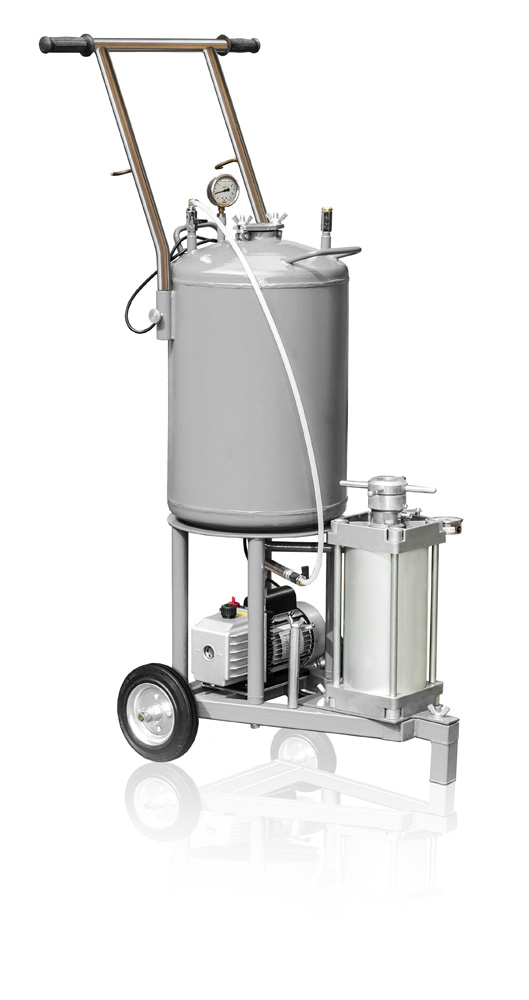GlobeCore oil purification equipment restores used oil to its original condition as well as eliminating the need for hazardous waste collection and disposal. The threat of a man made disaster prompts people to take protective measures to improve the environmental situation in which they work. One of the primary measures is to prevent used lubricating oils from being discharged into the environment including landfills, lakes, rivers and oceans.
In practical terms, the service life of oil may be extended by using several different methods of used oil regeneration. Some methods however, are not eco-friendly and this fact should be taken into consideration when choosing a method of used oil regeneration.
The main operational principle of oil processing equipment is based on the following widespread waste-recycling processes:
- Sulphuric Acid refining;
- Adsorption refining;
- Hydrogen refining;
- Selective refining;
- Thin film evaporation; and
- Ultra filtration.
Sulfuric Acid Refining consists in using sulfuric acid as the main reagent. It inter-reacts with unwanted impurities (asphalt-resinous substances and non-saturated compounds) which along with the unreacted acid settle down, forming acid sludge.
Such valuable components as naphthenes do not inter-react with acid and will be washed away by alkali water (NaOH) after the acid sludge is removed. Alkali water helps to neutralize the residues of acid and acid sludge. At the final stage, the oil is washed by water and then water is removed.
From an environmental point of view, acid sludge is considered to be a very hazardous waste. It contains asphalt-resinous substances, organics, products of unsaturated carbon polymerization and sulfuric acid (may constitute as much as 70%). It makes no economic sense to use acid sludge, so it is stored up in special retention ponds without being disposed. It is therefore, acid sludge accumulation that poses a great danger to the environment.
Another disadvantage is that polycyclic aromatic hydrocarbons and high-toxic chlorine compounds are not removed from used oils during sulfuric acid refining.
Adsorption Refining is carried out by:
- Contact method (oil is blended with grinded adsorbent);
- Percolation method (oil is run through the adsorbent);
- Counter-flow method (counter-flow of oil and adsorbent).
Contact refining is widespread at many companies in the USA. It is preceded by driving off water and fuel fractions. Activated clay serves as a sorbent. This process is trouble-free and provides for obtaining stable and high-quality basic oils. They may be blended with new oils with necessary additives being added.
This method has the following disadvantages:
(1) No possibility to control viscosity and boiling ranges; and
(2) High volume oil loss when in contact with the sorbent.
Hydrogen Refining
Hydrogen refining is performed under pressure of 2 Mpa with the help of catalysts and hydrogen at temeratures of between 380º and 400ºC. The sorbents are used to protect the catalysts from the contaminated oil.
In modern industry, oil hydrogenation is been used more often since it is more eco-friendly in comparison with sulfuric acid and adsorption refining.
Selective Solvent Refining
Dissolvent, required to carry out solvent refining, is able to dissolve unwanted impurities while at the some time not hraming or dissolving the useful oil components. It is therefore, the reason this type of refining is called “selective.”
Chemical components such as furfurol and phenol are applied to dissolve impurities. Phenol refining, as well as acid-base refining, adsorption or hydrogen refining does not remove solid hydrocarbons.
Thin Film Evaporation
Thin film evaporation, as a method of motor oil purification, has enjoyed widespread popularity since it was introduced many years ago. This kind of refining consists of separating products that are temperature-sensitive, viscous or have high molecular weight or a high boiling point.
Ultra Filtration
Ultra filtration is a relatively new refining method. Oil is filtered at molecular level through special membranes. Such an approach however, has not gained widespread industry acceptance while purifying used oils.
There is no doubt that the most methods listed above have been designed from an environmental point of view. Not all of them however, are able to prevent contamination that results from usage of reagents during regeneration.
Methods that require sulfuric acid to process oil are considered very dangerous though this method has enjoyed a widespread acceptance. It is applied together with vacuum distillation, propane treatment, furfural and sorbents that eliminate acid sludge.
Methods based on a hydrogenation processes are considered to be the cleanest ones. As a rule, they are used at the final stage of used oil purification.
In practical terms, hydrogen refining is used after thin-film evaporation. The GlobeCore technology is eco-friendly.
GlobeCore oil purification equipment is designed to ensure the high quality of regenerated oils as well as the elimination of hazardous waste being placed into the biosphere.
GlobeCore thinks not only about your profit, but about the future of your children as well!

